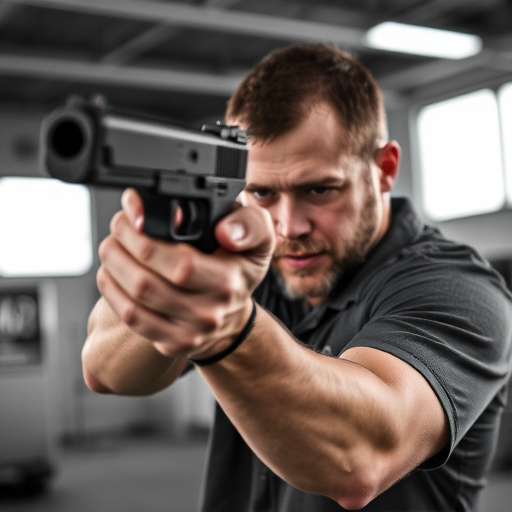Both Tasers and stun guns serve personal safety purposes but function differently: Tasers use electrical current through two probes to temporarily disable, while stun guns generate high-voltage pulses through a single probe causing localized muscle spasms. A concealed stun gun flashlight combo offers versatile self-defense in low-light situations by combining stun gun power with flashlight brightness. Legal regulations vary by region, requiring permits or registration in many countries; users must prioritize safety, undergo training, and invest in high-quality concealed stun gun flashlight combos for responsible self-defense within legal limits.
In today’s world, understanding the difference between a Taser and a stun gun is crucial for personal safety. This article delves into the key distinctions between these two non-lethal weapons, focusing on their unique features and applications. We explore the benefits of a concealed stun gun flashlight combo, ideal for self-defense in low-light environments. Additionally, we discuss legal considerations and essential safety precautions to ensure responsible usage.
- Taser vs Stun Gun: Understanding the Key Differences
- The Role of a Concealed Stun Gun Flashlight Combo
- Legal Considerations and Safety Precautions
Taser vs Stun Gun: Understanding the Key Differences

When it comes to personal safety devices, Tasers and stun guns are often considered similar tools, but they serve distinct purposes. The primary difference lies in their mode of operation and the effects they produce. A Taser is a specialized device that uses electrical current to disrupt muscle control, temporarily incapacitating the target. It fires two small probes connected to thin wires, delivering a powerful electric shock that can knock down an individual for several minutes. This makes Tasers highly effective for law enforcement, allowing officers to subdue resistant suspects without causing permanent harm.
On the other hand, stun guns, often part of concealed stun gun flashlight combos, operate by generating a high-voltage, low-amperage electrical pulse that disrupts nerve impulses in the body, leading to muscle spasms and temporary paralysis. Unlike Tasers, these devices typically use a single probe or bar that makes contact with the target’s skin. Stun guns are popular among individuals seeking personal protection, as they can be easily concealed and provide a non-lethal means of self-defense against potential threats.
The Role of a Concealed Stun Gun Flashlight Combo

A concealed stun gun flashlight combo offers a multifaceted self-defense solution for individuals seeking to enhance their safety, especially in low-light or dark environments. These innovative devices combine the power of a stun gun with the functionality of a bright flashlight, making them ideal for personal protection. The stun gun component delivers a powerful electric shock, incapacitating an assailant temporarily, while the flashlight provides clear visibility, allowing users to assess their surroundings and navigate safely.
This combo is particularly appealing to those who prioritize discreet self-defense without drawing unnecessary attention. The ability to blend functionality seamlessly into everyday carry items makes it a popular choice for professionals, such as security guards or individuals working in high-risk environments, who need a reliable tool that combines deterrence and illumination in a compact form factor.
Legal Considerations and Safety Precautions

When considering a Taser or a stun gun, it’s crucial to understand the legal landscape surrounding their use. The legality of stun guns and Tasers varies significantly from region to region, with some areas permitting their possession while others restrict or outright ban them. For instance, many countries allow concealed carry of stun guns under specific conditions, often requiring a permit or registration. Some jurisdictions even differentiate between stun guns and Tasers, with the latter sometimes being regulated more strictly due to their electrical pulse delivery system.
Safety precautions are paramount when dealing with any type of self-defense tool. Stun guns and Tasers can be powerful devices, and misuse can have severe consequences. Users should always familiarize themselves with local laws and seek professional training on proper usage. Additionally, responsible owners invest in high-quality concealed stun gun flashlight combos that offer both functionality and discretion. This balance ensures individuals are prepared for potential threats while adhering to legal requirements.
When choosing between a Taser and a stun gun, understanding their distinct functionalities is key. While both devices utilize electrical current to incapacitate, a Taser typically fires probes that deliver a high-voltage, low-current shock, causing muscle contraction and temporary paralysis. In contrast, a stun gun emits a continuous electrical discharge, creating intense pain and disorientation. For those seeking a more versatile option, the concealed stun gun flashlight combo offers both self-defense capabilities and illumination in a compact design. However, it’s crucial to familiarize yourself with local laws regarding stun guns’ possession and use for personal safety and legal compliance.
